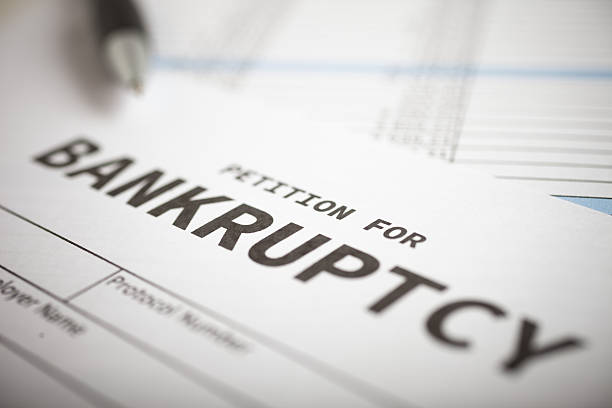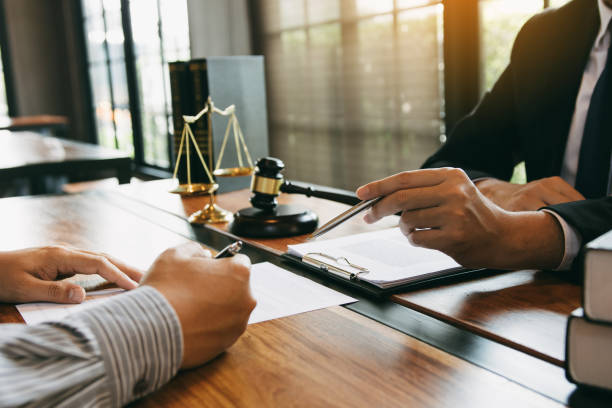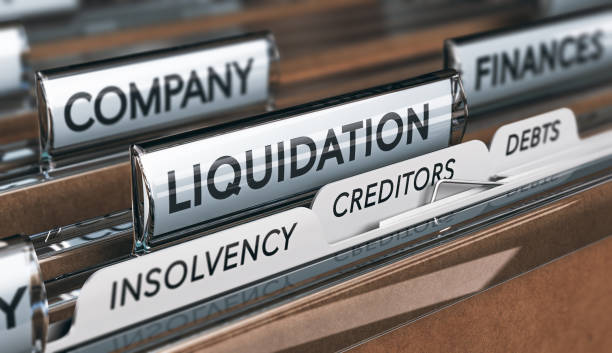
Are you seeking information on bankruptcy in Alberta? In this article, you will learn what you need to consider before declaring bankruptcy, the exempted assets in the declaration process, what you need to evaluate, and the steps to take when declaring bankruptcy in Alberta.
In Alberta, bankruptcy falls under Canada’s federal bankruptcy and insolvency laws. The BIA sets out the rules and procedures for individuals and businesses seeking relief from overwhelming debt. However, there is an agency that oversees and regulates the administration of bankruptcies and proposals in Alberta, known as the Office of the Superintendent of Bankruptcy (OSB).
The OSB is an agency of the federal government that operates within the framework of the BIA. It is responsible for supervising and regulating all bankruptcy proceedings, licensed insolvency trustees (LITs), and the administration of estates in bankruptcy in Canada, including Alberta.

Things to Consider Before Declaring Bankruptcy
Eligibility:
Both individuals and businesses can file for bankruptcy in Alberta. However, eligibility criteria and the process may differ for each.
Licensed Insolvency Trustee (LIT):
To file for bankruptcy as an individual or business, you must be ready to work with a licensed insolvency trustee. A LIT is a professional who administers bankruptcy and insolvency proceedings, helps you understand your rights and responsibilities, and guides you through the process.
Automatic Stay:
When you file for bankruptcy, an automatic stay comes into effect, prohibiting most creditors from pursuing collection actions against you. This stay immediately relieves you from harassment, wage garnishments, and other collection efforts.
Exemptions:
Alberta has certain exemptions that allow individuals to keep specific assets during bankruptcy. These exemptions vary depending on the type and value of the asset. Common exemptions may include a primary residence, household furnishings, clothing, tools of the trade, and certain RRSPs (Registered Retirement Savings Plans).
Discharge:
The ultimate goal of bankruptcy is to obtain a discharge, a legal release from your debts. The length of the bankruptcy process and the conditions for discharge depend on various factors, such as your income, surplus income, and whether you have been bankrupt before.
Credit Impact:
Filing for bankruptcy has significant implications for your creditworthiness. A bankruptcy record will appear on your credit report for several years, potentially making it challenging to obtain credit in the future.
Disclosure: My site is reader-supported. I may get commissions when you click through the affiliate links (that are great products I use and stand by) on my articles.

Bankruptcy in Alberta
- Are you seeking information on bankruptcy in Alberta?
- In this article, you will learn what you need to consider before declaring bankruptcy, the exempted assets in the declaration process, what you need to evaluate, and the steps to take when declaring bankruptcy in Alberta.
Assets Exempted in Alberta Bankruptcy
 In Alberta, specific exemptions are available to individuals who file for bankruptcy. These exemptions allow you to keep certain assets during the bankruptcy process. The exemptions vary depending on the type and value of the asset. Here are some common exemptions for individuals filing for bankruptcy in Alberta:
In Alberta, specific exemptions are available to individuals who file for bankruptcy. These exemptions allow you to keep certain assets during the bankruptcy process. The exemptions vary depending on the type and value of the asset. Here are some common exemptions for individuals filing for bankruptcy in Alberta:
Primary Residence:
The equity in your primary residence may be exempt up to a specific limit. The provincial government sets the exemption amount, which may change over time. In Alberta, as of my knowledge cutoff, the homestead exemption was up to $40,000 in equity.
Household Furnishings:
Essential household furnishings and appliances are generally exempt, including furniture, kitchen appliances, and personal effects.
Clothing:
Your clothing, including personal apparel and accessories, is typically exempt from seizure during bankruptcy.
Tools of the Trade:
Tools, equipment, and other assets you require to earn a living may be exempted up to a particular value. The specific value and types of tools that qualify for exemption can vary, so it’s essential to consult a professional to determine the applicable exemptions.
Vehicle:
In Alberta, there is no specific vehicle exemption. However, equity in a vehicle may be subject to negotiation with the licensed insolvency trustee, and arrangements can be made to retain the vehicle by paying the trustee the value of the equity or by entering into a payment plan.
RRSPs (Registered Retirement Savings Plans):
In Alberta, as of my knowledge cutoff, RRSPs are generally exempt from seizure during bankruptcy. However, contributions made to RRSPs within the 12 months before bankruptcy may not be fully exempt, subject to certain limits.
It’s important to note that these exemptions have specific criteria, limitations, and potential changes over time. The exemptions may also vary depending on your circumstances, such as your marital status and dependents. Consulting with a licensed insolvency trustee is essential to determine the exemptions applicable to your situation and receive guidance tailored to your needs.
What To Evaluate When You Want To File For Bankruptcy In Alberta

Deciding whether to file for bankruptcy is a complex and personal decision that depends on your unique financial circumstances. While I can provide some general information, it’s crucial to consult with a licensed insolvency trustee or a qualified legal professional to assess your situation and explore all available options. Here are some factors to consider when evaluating whether to file for bankruptcy in Alberta:
1. Level of Debt
Assess the extent of your debt and whether it is overwhelming or unmanageable. Bankruptcy may be a viable option if you have significant debts you cannot repay within a reasonable timeframe.
2. Financial Stability
Evaluate your ability to meet basic living expenses and cover debt obligations. If you struggle to make minimum payments, face wage garnishments or collection actions, or experience constant financial stress, bankruptcy may provide relief and a fresh start.
3. Alternative Options
Explore alternative debt relief options before considering bankruptcy. These may include debt consolidation, debt settlement negotiations, or consumer proposals. These options can help you avoid bankruptcy and minimize the impact on your creditworthiness.
4. Asset Considerations
Assess the value and exemptions of your assets. If you have substantial equity in non-exempt assets, bankruptcy may result in the sale of those assets to repay creditors. Understanding the potential impact on your assets is essential when making a decision.
5. Credit Impact
Consider the long-term impact on your creditworthiness. Filing for bankruptcy can significantly negatively impact your credit score and can remain on your credit report for several years. It may affect your ability to obtain future credit and other aspects of your financial life.
6. Legal and Professional Advice
Consult with a licensed insolvency trustee or a qualified legal professional who can assess your financial situation, explain the implications of bankruptcy, and guide you through the process. They can help you explore all available options and provide advice tailored to your needs.
Four Alternatives To Bankruptcy

When facing overwhelming debt, bankruptcy is not the only option available. Here are four alternatives to bankruptcy that you can consider, depending on your financial situation and goals. They are as follows:
1. Debt Consolidation
Debt consolidation involves combining multiple debts into a single loan or credit facility. This can help simplify your debt payments and potentially secure a lower interest rate. It can be done through a personal loan, a home equity loan, or balance transfers to a low-interest credit card. Debt consolidation allows you to repay your debts over time while avoiding the severe credit implications of bankruptcy.
2. Consumer Proposal
A consumer proposal is a formal, legally binding agreement between you and your creditors. A licensed insolvency trustee administers it. Through a consumer proposal, you propose a repayment plan to your creditors, typically offering to repay a portion of the total debt over an extended period (usually up to five years).
If most of your creditors accept the proposal, it becomes binding on all parties involved.
3. Debt Management Plan (DMP):
A debt management plan is an informal agreement between you and your creditors. You work with a credit counseling agency to develop a plan for repaying your debts. The agency negotiates with your creditors to reduce interest rates, waive fees, and create a more manageable repayment schedule. With a DMP, you make regular payments to the credit counseling agency, which distributes the funds to your creditors.
4. Negotiating with Creditors
You can contact your creditors directly to negotiate more favorable debt terms. This may involve requesting a lower interest rate, reduced monthly payments, or a more extended repayment period. Creditors may be willing to work with you if they believe it is a better alternative to bankruptcy and ensures some debt repayment.

Bankruptcy in Alberta
- Are you seeking information on bankruptcy in Alberta?
- In this article, you will learn what you need to consider before declaring bankruptcy, the exempted assets in the declaration process, what you need to evaluate, and the steps to take when declaring bankruptcy in Alberta.
5 Steps To File For Bankruptcy In Alberta

Filing for bankruptcy in Alberta involves a structured process that should be handled with the guidance of a licensed insolvency trustee.
Here are five steps typically involved in filing for bankruptcy in Alberta:
1. Consultation with a Licensed Insolvency Trustee (LIT)
Begin by scheduling a consultation with a licensed insolvency trustee. The LIT will assess your financial situation, review your debts, assets, and income, and discuss your options. They will explain the implications of bankruptcy and help determine if it is the most suitable course of action for your circumstances.
The easiest way to get a Licensed Insolvency Trustee is to check the Federal Government’s Directory of Licensed Insolvency Trustees. You can also check out some other companies. Companies that you can get a Licensed Insolvency Trustee on Staff include Deloitte, BDO Canada, MNP Ltd, Allan Marshall & Associates Inc., and Grant Thornton.
2. Preparing Documentation
If you decide to proceed with bankruptcy, the LIT will guide you in collecting the necessary documentation. This typically includes providing information on your income, debts, assets, expenses, and any legal actions or garnishments against you. The LIT will help you complete the required forms, such as the Personal Property and Affairs Form and the Statement of Affairs, and determines the total value of all of your assets, such as a Registered Retirement Savings Plan (RRSP), company pension, residence, vehicle, and cash on hand.
The trustee provides all the necessary documents to the government to declare you for bankruptcy, including outlining all your income sources and expenditure.
3. Filing Bankruptcy Documents
Once all the necessary documents are completed, signed, and gathered, the LIT will file the bankruptcy documents on your behalf with the Office of the Superintendent of Bankruptcy (OSB). This includes filing the Assignment in Bankruptcy, which legally transfers control of your assets to the trustee.
4. Completion of the Bankruptcy Process
Throughout the bankruptcy process, you will be required to fulfill certain obligations. These may include attending financial counseling sessions and making surplus income payments if your income exceeds the threshold set by the OSB.
The length of bankruptcy can vary depending on several factors, including your income and whether you have been bankrupt before. The standard bankruptcy period is nine months for a first-time bankruptcy and 21 months if you have surplus income. If this is your second bankruptcy, the standard period is increased to 24 months and 36 months if you have surplus income.
Additionally, as a bankrupt person, you will need to perform specific duties during bankruptcy, they include:
- Surrendering your non-exempt assets to the Licensed Insolvency Trustee;
- Providing all your credit cards to the Licensed Insolvency Trustee;
- Attending at least two credit counseling sessions
- Submit proof of monthly income and certain expenses to the Licensed Insolvency Trustee.
- Making monthly payments to the Licensed Insolvency Trustee for administrative costs.
Once you have completed these requirements, received the necessary counseling, and fulfilled your obligations, you will be eligible for discharge from bankruptcy.
5. Bankruptcy Discharge
You get discharged automatically from bankruptcy after the stated time frame expires. At this point, you are no longer considered bankrupt, and you don’t have a legal obligation to pay most of the debts you owned when you filed for bankruptcy in Alberta.
However, there are a few types of debt that a bankrupt person is still responsible for settling for after discharge: Student loans from within seven years of being a full-time or part-time student, debts from perpetrating fraud, court-imposed monetary penalties, and spousal and child support.
However, if a person fails to meet the obligation during bankruptcy, they might not be discharged. Additionally, you may risk being discharged from bankruptcy if you go against any law under the Bankruptcy and Insolvency Act.
What Is The Difference Between Insolvency And Bankruptcy?

Insolvency and bankruptcy are related concepts but have distinct meanings. Here is the difference between them:
Insolvency refers to a financial state in which an individual or entity cannot meet their financial obligations or pay their debts as due. It is a broader term that encompasses both individuals and businesses. Insolvency can be temporary or ongoing, resulting from various factors such as cash flow problems, excessive debt, or financial mismanagement. When someone is insolvent, their liabilities exceed their assets, and they cannot maintain a stable financial position.
Bankruptcy is a legal process initiated by an insolvent individual or business seeking relief from overwhelming debt. It is a formal declaration of insolvency through a court proceeding. Bankruptcy provides a framework for resolving the financial affairs of an insolvent person or business. It involves the involvement of a licensed insolvency trustee who administers the bankruptcy process, liquidates non-exempt assets, and distributes the proceeds among creditors to the extent possible.
The difference is that insolvency is a financial state where a person or entity cannot meet their financial obligations. At the same time, bankruptcy is a legal process that an insolvent individual or business pursues to address their debt situation and obtain relief from the burden of those debts.
Frequently Asked Questions
1. What is insolvency and bankruptcy?
Insolvency refers to a financial state in which an individual or entity cannot meet their financial obligations or pay their debts as due. Bankruptcy is a legal process initiated by an insolvent individual or business seeking relief from overwhelming debt. It provides a framework for resolving the financial affairs of an insolvent person or business and involves the involvement of a licensed insolvency trustee who administers the bankruptcy process, liquidates non-exempt assets, and distributes the proceeds among creditors to the extent possible.
2. How do I get a Licensed Insolvency Trustee (LIT)?
The easiest way to get a Licensed Insolvency Trustee is to check the Federal Government’s Directory of Licensed Insolvency Trustees. You can also check out some other companies. Companies that you can get a Licensed Insolvency Trustee on Staff include Deloitte, BDO Canada, MNP Ltd, Allan Marshall & Associates Inc., and Grant Thornton.
3. What documents are typically required for bankruptcy?
If you decide to proceed with bankruptcy, your LIT will guide you in collecting necessary documentation such as information about your assets, debts, income, and expenses. You will likely need to provide proof of identity, tax returns for the past two years, bank statements, pay stubs, or other documents that demonstrate your financial situation.
4. How long does bankruptcy last?
The length of a bankruptcy depends on several factors such as your income and whether this is your first or subsequent bankruptcy. Typically it takes nine months for a first-time bankrupt person and 21 months if you have surplus income. If this is your second bankruptcy, the standard period is increased to 24 months and 36 months if you have surplus income.
5. What do I need to do to complete the Bankruptcy process?
Answer: As a bankrupt person, you will need to perform specific duties during bankruptcy, they include surrendering your non-exempt assets to the Licensed Insolvency Trustee; providing all your credit cards to the Licensed Insolvency Trustee; attending at least two credit counseling sessions; submitting proof of monthly income and certain expenses to the Licensed Insolvency Trustee; making monthly payments to the Licensed Insolvency Trustee for administrative costs. Once you have completed these requirements, received the necessary counseling, and fulfilled your obligations, you will be eligible for discharge from bankruptcy.
6. What debts are still owed after bankruptcy?
After being discharged from bankruptcy, a person is no longer obligated to pay most of their debts. However, there are a few types of debt that still must be settled: Student loans from within seven years of being a full-time or part-time student; debts from perpetrating fraud; court-imposed monetary penalties; and spousal and child support. Additionally, if certain obligations are not met during bankruptcy, an individual may risk being discharged from bankruptcy.

Bankruptcy in Alberta
- Are you seeking information on bankruptcy in Alberta?
- In this article, you will learn what you need to consider before declaring bankruptcy, the exempted assets in the declaration process, what you need to evaluate, and the steps to take when declaring bankruptcy in Alberta.
Conclusion
It’s important to note that bankruptcy should be considered a last resort. Before making any decisions, exploring other debt-relief options, such as debt consolidation, consumer proposals, or negotiating with your creditors, is advisable. Consulting with a licensed insolvency trustee or a qualified legal professional can help you understand your options and make an informed decision based on your circumstances.






